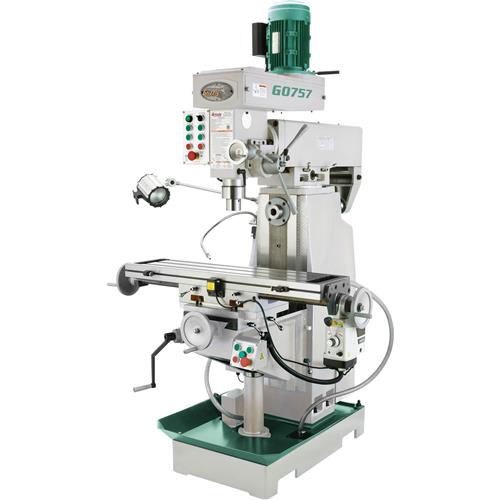HennieL
Well-Known Member
Hi Everyone,
Following up on the most informative discussion "Let's talk drilling", I would really appreciate your comments and input regarding milling machines.
I've been using a little Optimum BF20 mill/drill for the past few years, and have become more and more frustrated with it's lack of capabilities, especially in machining tool steels and such - case in point I recently tried to mill a 12mm slot in a piece of annealed cobalt high-speed steel (HSS-Co), and I could not make cuts deeper than 0.25mm with a four flute end-mill, or with a 12mm ball-nose end-mill, using HSS-Co6 cutters from a reputable supplier. Because the lack of cutting capacity, I ended up with this tool steel work-hardening on me, and I blunted two end mills... So, long story short, I am seriously looking to buy a new milling machine - and that's where I would appreciate some advice from members with more engineering experience than me.
OK, so after a lot of research and price shopping, I must make some serious decisions, amongst others:
The Bridgeport type with horizontal receptical...

Or the Universal Head type...

Both machines would have power feeds in the "X", "Y" and "Z" axes. The Bridgeport type has the advantage of a quill type head that can be used for drilling as well, whilst the universal head type machine does not have a quill, and can only be fed vertically through it's knee, but is more sturdy. Does anyone have first-hand experience with the latter type of machines, and can you please explain how one would accurately adjust the milling depth on it?
Thanks in advance for your comments, advice, and constructive criticism (also on any other type of mill that you might consider to be more appropriate) - and of course realizing that here in South Africa my choice of brands and types are limited to either "made in China" or "made in India"...
Hennie
Following up on the most informative discussion "Let's talk drilling", I would really appreciate your comments and input regarding milling machines.
I've been using a little Optimum BF20 mill/drill for the past few years, and have become more and more frustrated with it's lack of capabilities, especially in machining tool steels and such - case in point I recently tried to mill a 12mm slot in a piece of annealed cobalt high-speed steel (HSS-Co), and I could not make cuts deeper than 0.25mm with a four flute end-mill, or with a 12mm ball-nose end-mill, using HSS-Co6 cutters from a reputable supplier. Because the lack of cutting capacity, I ended up with this tool steel work-hardening on me, and I blunted two end mills... So, long story short, I am seriously looking to buy a new milling machine - and that's where I would appreciate some advice from members with more engineering experience than me.
OK, so after a lot of research and price shopping, I must make some serious decisions, amongst others:
- what would be the most versatile, smallish footprint machine with a professional size chuck, enough power to do some actual milling, and still small enough to fit into my single garage sized workshop that already has a 1m lathe and a large work table.
- In my opinion a dual vertical and horizontal type machine would be much more versatile than just a vertical type mill - do you concur?
- I would like to have a machine with an ISO-40 size head - would this be the most versatile, or what would you recommend (nothing larger...)
- And the most difficult/controversial question, would a machine with a Bridgeport type vertical head with an additional horizontal receptacle be "better" than a universal type head that can take both horizontal and vertical cutters in the one head?
The Bridgeport type with horizontal receptical...

Or the Universal Head type...

Both machines would have power feeds in the "X", "Y" and "Z" axes. The Bridgeport type has the advantage of a quill type head that can be used for drilling as well, whilst the universal head type machine does not have a quill, and can only be fed vertically through it's knee, but is more sturdy. Does anyone have first-hand experience with the latter type of machines, and can you please explain how one would accurately adjust the milling depth on it?
Thanks in advance for your comments, advice, and constructive criticism (also on any other type of mill that you might consider to be more appropriate) - and of course realizing that here in South Africa my choice of brands and types are limited to either "made in China" or "made in India"...
Hennie
Last edited:






